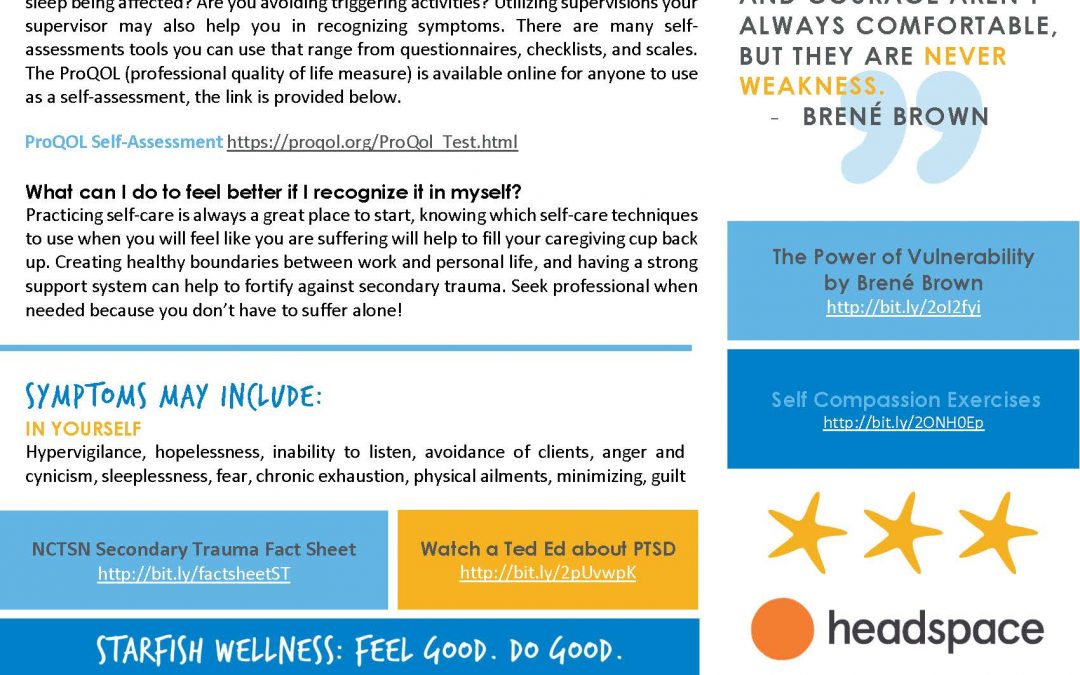When You Have Secondary Trauma
How do I recognize it in myself?
Check in with your well-being each month. Are stories staying with you longer? Is your sleep being affected? Are you avoiding triggering activities? Utilizing supervisions your supervisor may also help you in recognizing symptoms. There are many self assessments tools you can use that range from questionnaires, checklists, and scales. The ProQOL (professional quality of life measure) is available online for anyone to use as a self-assessment.
What can I do to feel better if I recognize it in myself?
Practicing self-care is always a great place to start, knowing which self-care techniques to use when you will feel like you are suffering will help to fill your caregiving cup back up. Creating healthy boundaries between work and personal life, and having a strong support system can help to fortify against secondary trauma. Seek professional when needed because you don’t have to suffer alone!
Symptoms may include:
- Hypervigilance
- Hopelessness
- Inability to listen
- Avoidance of clients
- Anger and cynicism
- Sleeplessness
- Fear
- Chronic exhaustion
- Physical ailments
- Minimizing
- Guilt
Vulnerability sounds like truth and feels like courage. Truth and courage aren’t always comfortable, but they are never weakness.
— Brené Brown







